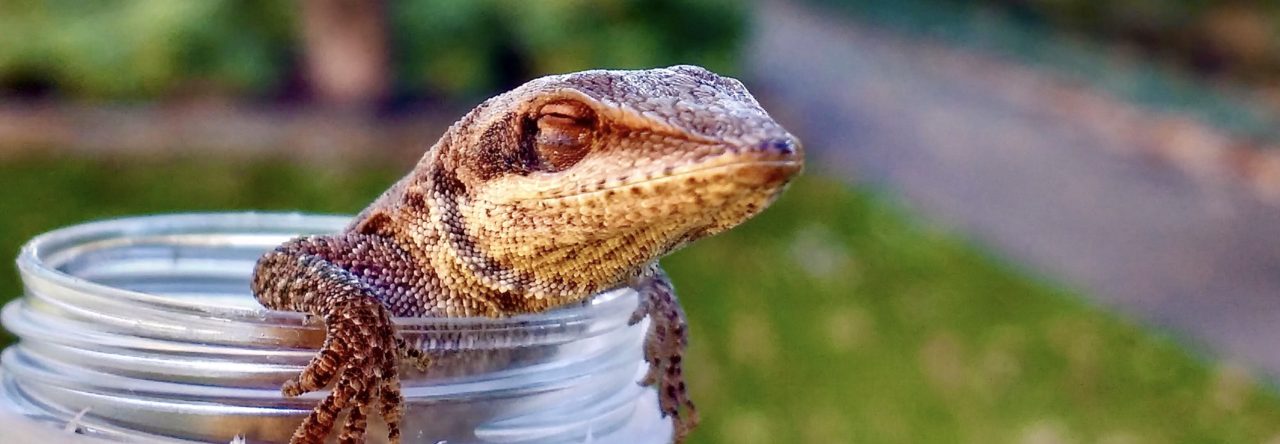The abilities of certain animals to navigate and home on a specific location over long distances are some of the most fascinating behaviors that scientists study. However, studying homing behavior, especially experimentally, can be a major challenge, as many animals home over long distances (thousands of miles), in difficult-to-study environments (underwater, high in the sky), on in ways that are technically difficult or very expensive to monitor. As we know, anoles can be relatively simple (and cheap!) to study. So what if anoles could be developed as a model system for studying homing behavior?
On the surface, the presence of homing behavior in anoles might seem unlikely, as many species are highly territorial and may not travel long distances during their lifetimes. David Steinberg and Manuel Leal showed that, while seeming unlikely at first glance, at least one species of anole, Anolis gundlachi, does indeed show strong homing behavior.
Anolis gundlachi, the yellow-chinned anole, is a denizen of cool, closed forests in Puerto Rico. Because these lizards stick close to their small territories, they likely have little specific knowledge of their surrounding habitats, potentially making navigation through unfamiliar areas difficult. Steinberg displaced anoles 40 and 80 meters from their home territories and then monitored their territories to see how many anoles returned. Surprisingly, 40-60% of females returned and 80% of males returned, even when taken 80 meters from their homes. Simulations of these movements show that it is highly unlikely anoles would be able to return to their territories in this way via random searching. Steinberg then tested whether two common mechanisms that support homing, use of magnet fields and visual detection of polarized light, were responsible for homing, but found that the homing abilities of these anoles do not depend on either of these two senses.
Finally, Steinberg tracked anoles through the Puerto Rican forest using radio transmitters, and found that anoles returned to their home territories with a high degree of accuracy, in some cases making a beeline home within 24 hours! These results suggest that homing ability may be more common in anoles than has previously been considered, and that strong selection for territory ownership in anoles may support spatial memory and navigation in these animals.



Leave a Reply